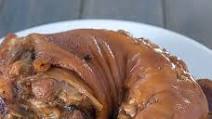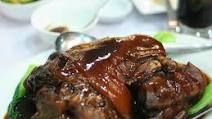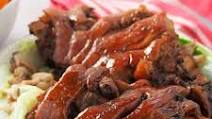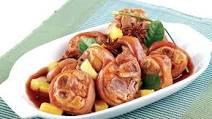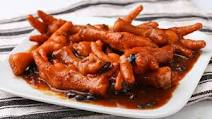What should I make for dinner tonight? This might just be the number one question that we ask ourselves almost daily over here.
Then you have come to the right place, we have rounded up 9 pata tim recipe del monte that we have shared over the years.
Plus, there is such a variety of flavours in these recipes, so you are sure to find something for you. Most of these recipes are quick and easy ones made especially for busy weeknights.
9 Pata Tim Recipe Del Monte
Pata Tim Recipe
How To Cook Pata Tim
Pata Asado Recipe
Papa’s Patatim
Easy Pork Hamonado
Sweet Chili Garlic Shrimp
Pato tim or patuten or humbang itik (marinated duck braised in soy sauce)
Chicken Feet with Black Beans Recipe
Is Pata Tim and humba the same?
Pata tim uses star anise. The humba is often likened to the adobo with a big difference: the sweetness of the sauce. … The pata tim on the other hand also have similar ingredients to the adobo since it too has soy sauce, peppercorns, and vinegar but without the tangy flavor as well.
How do you do PATA?
Instructions
- Set turbo broiler to 350F. Broil pata for 20 minutes.
- Boil water in a cooing pot. Add broiled pata. …
- In a clean cooking pot, arrange the pata. …
- Add Knorr Pork Cube, star anise, and Shitake mushrooom. …
- Add sugar. …
- Add baby bok choy. …
- Transfer to a serving plate.
Why is it called Pata Tim?
Origin. Pata tim, like the more common humbà, is derived from the Chinese red braised pork. … ‘to braise; to stew’, forming the full term, Pata tim, literally meaning “braised pork hock” as part of its origins from the Chinese dish, red braised pork.
How do you cook pork leg with pineapple?
Instructions
- In a pot, brown garlic in oil.
- Add pork leg and brown on all sides.
- Now add all of the remaining ingredients, apart from the sliced pineapples.
- Bring to a boil and slowly simmer for 2 hrs.
- Add the pineapples then simmer for additional 15 minutes. Serve.
What is the difference between humba and adobo?
Humba is a specific dish usually restricted to pork belly, while adobo is a cooking process that can be used to cook a variety of ingredients from meat to vegetables. In the central and southern islands of the Philippines, both humba and adobo exist and are not confused with each other.
